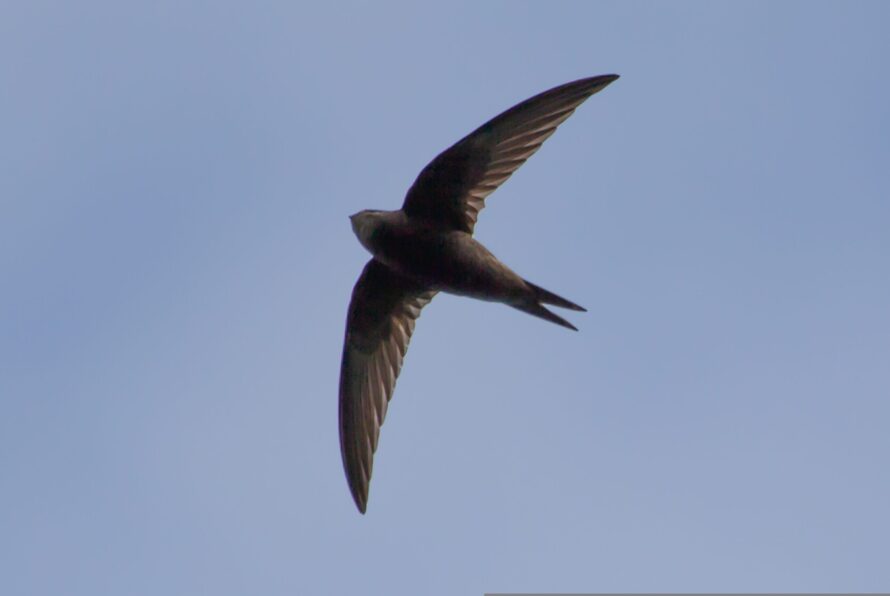idverde nominated for Pro Landscaper Business Awards 2025
We are delighted to share that idverde has been nominated for one of the Pro Landscaper Business Awards 2025!
Grounds Maintenance, Landscape Creation, Arboriculture, Sports Surfacing, Parks management, IOS Managing Safely Training, Ecology & Biodiversity, Grass cutting, Horticulture, Street Cleaning, Soft Landscaping, Hard Landscaping
idverde provides a wide range of green services, including grounds maintenance, landscape creation, and advice services, to both private and public sectors across the UK.
Every year on the third Friday of May the Endangered Species Coalition urges everyone around the globe to learn and take action to protect threatened and endangered species.
With this in mind, we’d like to share the amazing work that our team has been focusing on with the support of the RSPB, to build habitats for the beautiful Swift, a species of bird that was red listed in 2021. Almost 60% of the Swift population has vanished in the last 25 years. This sobering fact is why we have decided to team up with the RSPB with the aim to create beautifully designed green spaces and enhance existing habitats that benefit both communities and nature.
Our dual ambition is to encourage life to thrive in urban areas by boosting biodiversity where land is overseen through contracts and collaborations with local authorities and the private sector; from cemeteries and churches to football stadiums.
This case study aims to highlight the important work our partnership is doing to build a better, more biodiverse habitat for the Swift in order to build nesting habitats and by default, the population as a whole.
The majestic Swift travels over 4000 miles to migrate to Europe and the Middle East from Sub-Saharan Africa. The Swifts arrive early May and usually depart towards the end of August. They are also the fastest recorded bird in level flight.
The Swift is a medium-sized aerial bird, which is a superb flyer. Sleeping, eating, bathing and even mating on the wing, Swifts rarely touch the ground. Swifts are typically a plain sooty brown colour, with a white throat, yet in flight they appear black against the sky. They have long, scythe-like wings and a short, forked tail.

All over the country, our teams have been working together with the RSPB’s biodiversity advisors to build bespoke Swift boxes and habitats in some of the most unlikely of places.
By encouraging the use of underutilised green and urban spaces, we can enhance the Swifts’ chances of survival and encourage the birds to migrate, nest and rear their young safely to increase their populations.
From churches to football stadiums, idverde and the RSPB have been hard at work encouraging safe habitats for this endangered species to thrive. Below are three examples of what we have been doing and will continue to do across the UK to help the majestic Swift.
One unexpected habitat idverde and the RSPB have identified are churches in the Telford and Wrekin area. The height of these buildings makes them perfect for nesting behaviour; as the Swift needs to ‘fall and fly’ from a height rather than ‘take-off’. Church towers provide not only height but seclusion, making them ideal nesting places.
The RSPB & idverde are collaborating with communities across the Telford & Wrekin, Charnwood (Leicestershire) and Northampton areas, installing these Swift boxes on the towers of churches and other public buildings. But it isn’t always that simple. As they are almost always listed landmarks there must be a well thought out approach for fixing these boxes securely, safely, and without damaging the louvres and surrounding walls.
The technical knowledge of RSPB’s Conservation Science team along with engineering experience from RSPB volunteers, has enabled the organisation to design and manufacture Swift calling devices. These solar powered devices mimic the calling sound of the Swift to help encourage them onto sites. Once drawn in, colonies can quickly accumulate year after year. If we evidence the potential of what can be achieved, we hope that future partners will see the benefit and follow suit.
We won’t be stopping here however, idverde and the RSPB aims to expand this approach to retail outlets, multi-storey car parks, town halls, universities, business premises, and more. The potential is endless.
By the end of May 2023, the project will have installed 100 boxes into 8 church belfries with a solar-caller accompanying each set of boxes. Within two years we aim to have 250 boxes installed across a mix of churches and commercial buildings.
You can read more about the Swift church project here or find out more from our complimentary video. Courtesy of Ross Bray.
The idverde/RSPB partnership team at Wormwood Scrubs have high hopes on creating a ‘Swift Street’ that will join volunteer groups building Swift boxes within the estate that borders Wormwood Scrubs; to encourage migrating Swifts to build nests and rear their young within the open space.
The current goal is to encourage as many residents as possible, who live on the closest street to Wormwood Scrubs, to let us install Swift boxes on their homes or in their gardens.
Ross Bray (RSPB/idverde advisor for the Midlands) donated a Swift caller which will be set up alongside some of the boxes to nudge the Swifts to come check it out.
This initiative has high hopes of expansion. We are in talks with potentially interested corporate groups to build Swift boxes this summer. We are also hoping to eventually offer this on a larger scale across the borough. We’ve recently had sightings of our beautiful Swifts returning over the Scrubs, already showing exciting signs that this initiative may have a successful outcome.
For more information on Endangered Species Day you can visit: https://www.endangered.org/campaigns/endangered-species-day/